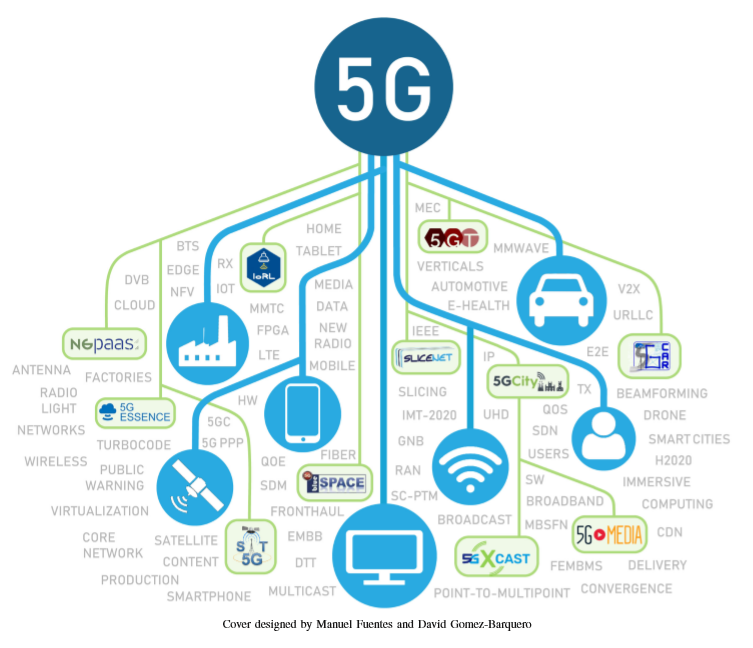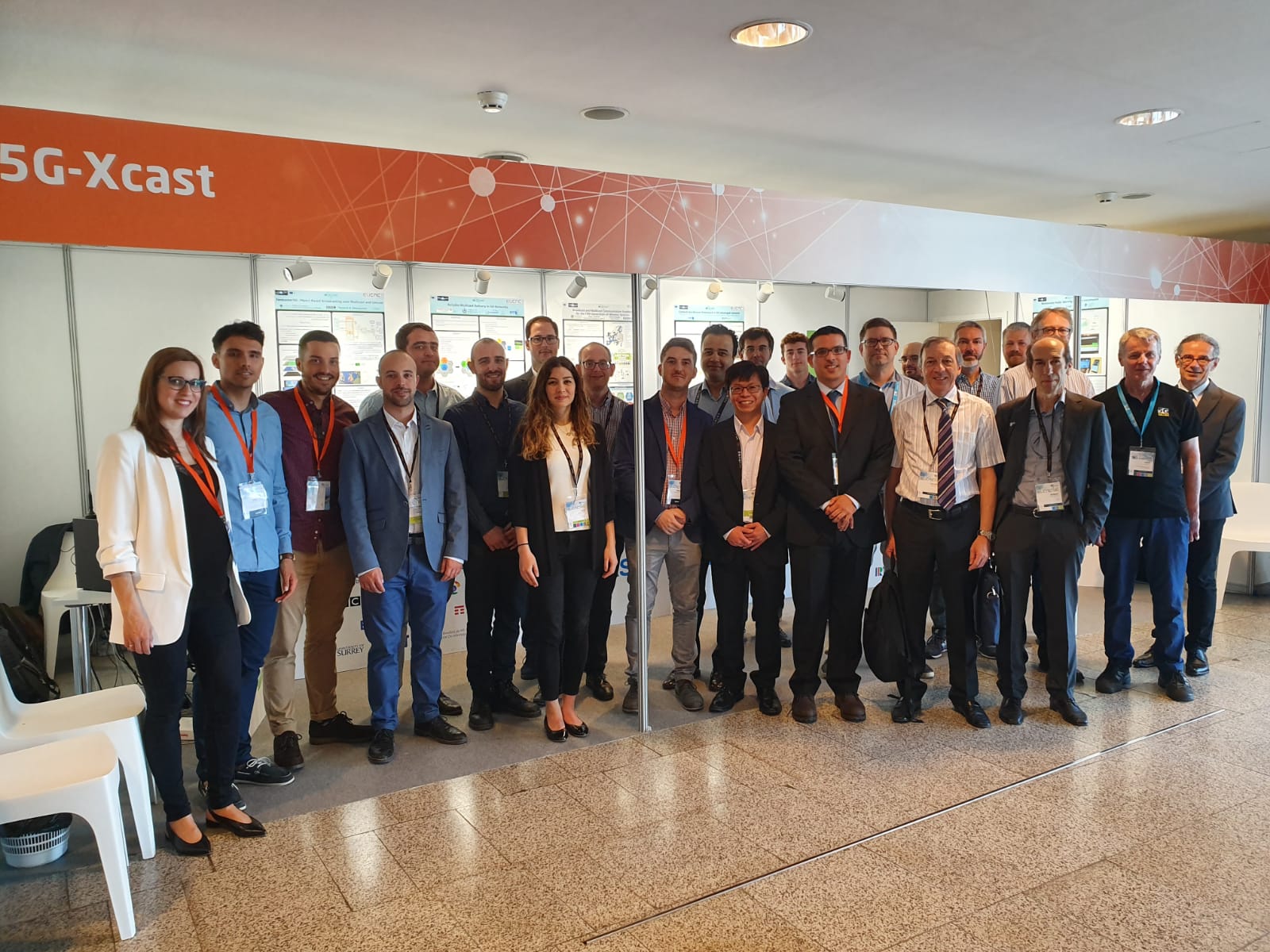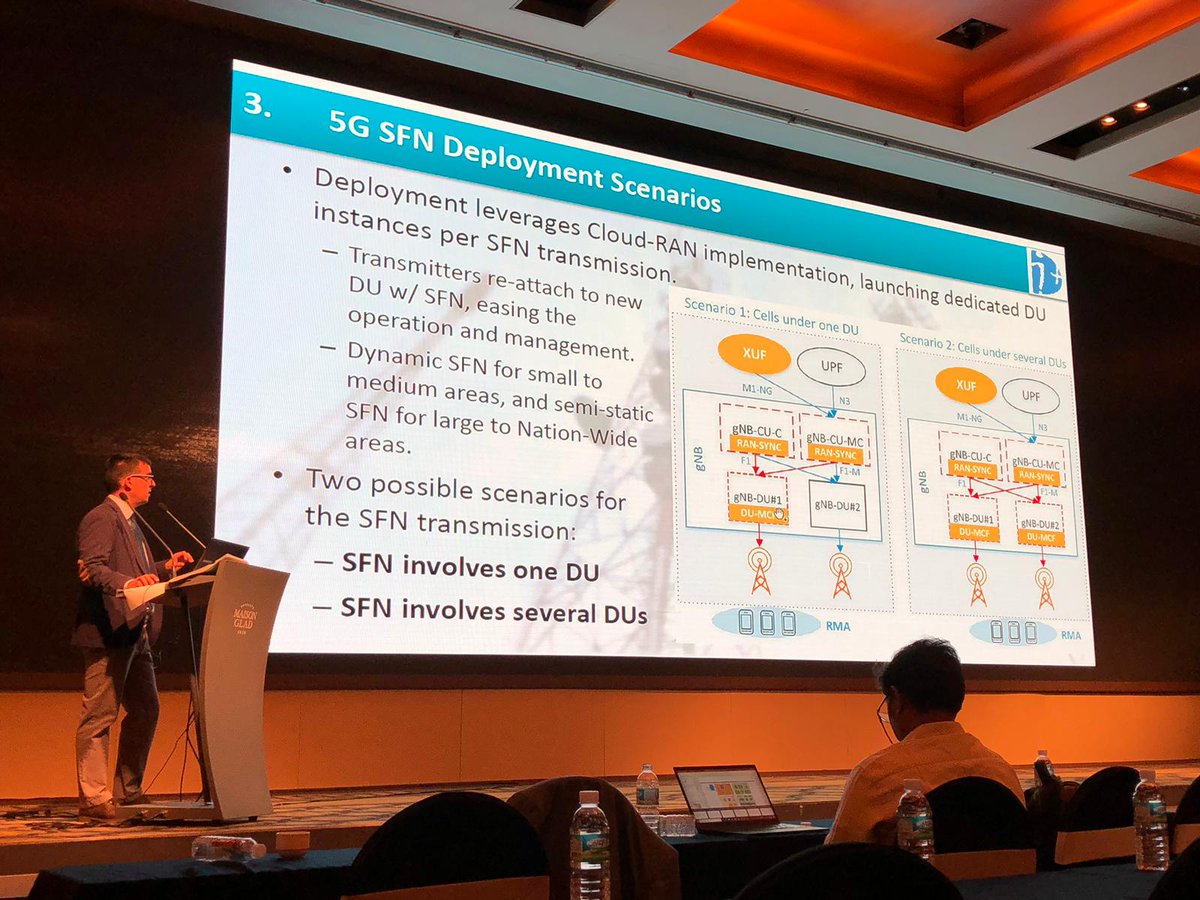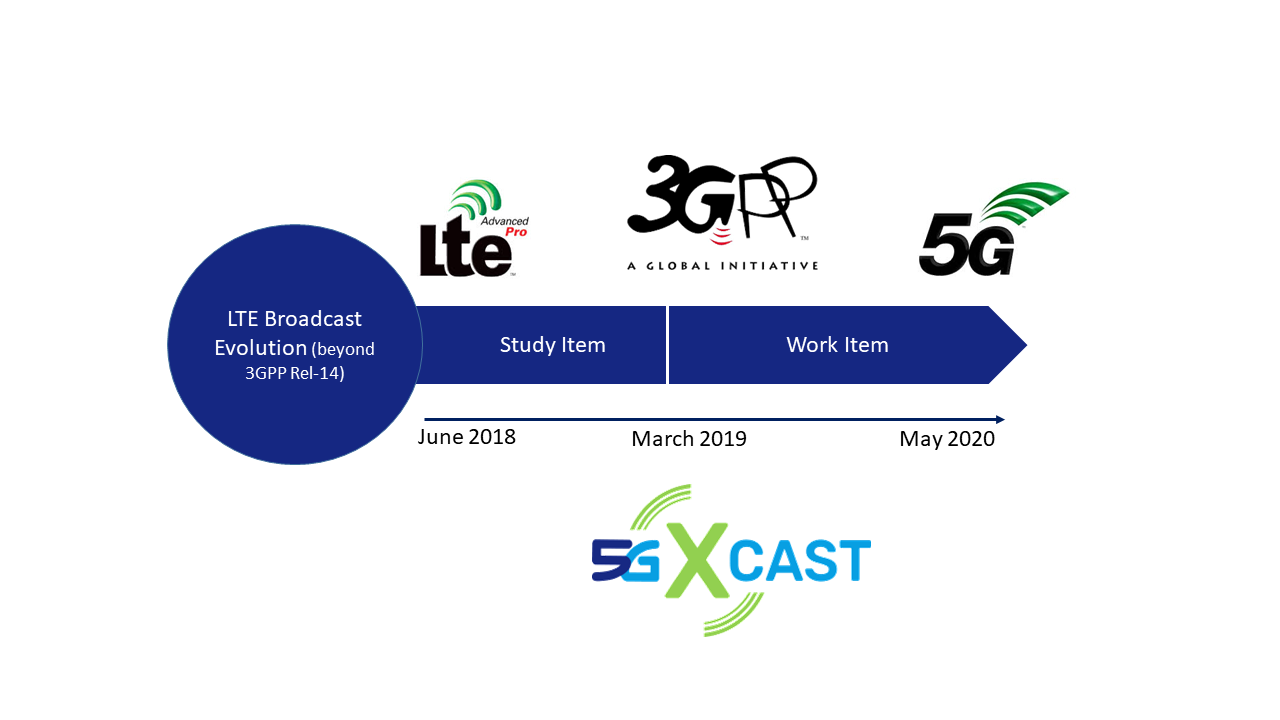5G-Xcast is proud to announce the acceptance and forthcoming release of the latest project contribution to the development of a holistic media delivery system for 5G. The journal paper entitled ‘5G New Radio for Terrestrial Broadcast: A Forward-Looking Approach for NR-MBMS’ tackles one particular aspect of media delivery: linear TV and radio services, i.e. Terrestrial Broadcast services. The contribution is focused on the physical layer design for NR-MBMS, a system developed following the principle of being as close as possible to current 5G specifications in order to minimize complexity and potentially leverage solutions that may also be applicable to other verticals requiring multicast/broadcast capabilities. On top, a configuration option suitable for the transmission of linear TV and radio services in either single-cell, MFN or SFN operation is derived.
The research paper evaluates the proposition of Terrestrial Broadcast for NR-MBMS and compares it to LTE-based FeMBMS (also known as LTE-based 5G Broadcast) in terms of flexibility, performance, capacity, and coverage. This work, developed in cooperation between IRT, Samsung, UPV and BBC, is expected to appear in the next issue of the prestigious IEEE Transactions on Broadcasting.
5G-Xcast has designed a global approach to media delivery in 5G by enabling multicast/broadcast on the currently available specifications in 3GPP for the access network (5G-NR) and the core (5GC). Reusing unicast procedures as much as possible a Multicast/Broadcast Mixed Mode for NR-MBMS can balance network load by a seamless switch of unicast to multicast/broadcast delivery. This is complemented by the Terrestrial Broadcast approach which permits to configure the 5G system to deliver linear TV and radio services using a receive-only mode, without the need of uplink and incorporating broadcast infrastructure (e.g. High-Power High-Tower or Medium-Power Medium-Power, in addition to Low-Power Low-Tower). A solution suitable for TV and radio delivery over MNO (mobile network operator) or BNO (broadcast network operator) infrastructure.
The solution is a natural next step, taking into account that the current technological framework (LTE eMBMS) is already 10 years old and that 5G offers unprecedented capabilities and a totally new and more efficient design.
The 5G-Xcast Terrestrial Broadcast mode takes advantage of new 5G-NR features such as better bandwidth utilization, advanced coding technologies for data (LDPC) and control channels (polar codes), avoid problems with the CAS by an orthogonal frequency allocation of the new SS blocks, make use of the possibilities to multiplex different numerologies within the same 5G-NR carrier, among others. So, we are not just updating FeMBMS from LTE to NR, which will make little sense if no gains are obtained. In fact, our initial approach has been to design the system to operate with the standard numerology (addressing LPLT SFN deployments or even MFN configurations) in order that simply enable TV and radio services to be efficiently allocated into 5G-NR carriers and correctly identified so that there is no need for the UE to be previously registered in the network (exactly like a traditional terrestrial broadcast standard). Once this new framework is established, changes in terms of numerologies can be applied to support up to HPHT SFN deployments, which may require advanced changes in the specifications. The proposal was anticipated during the #5GMEDIAROAD2019 event organized by the 5G-PPP MediaRoad project and hosted by IRT.
The contribution is already available for open access on the Documents section of our public website and the 5G-Xcast Researchgate profile.





